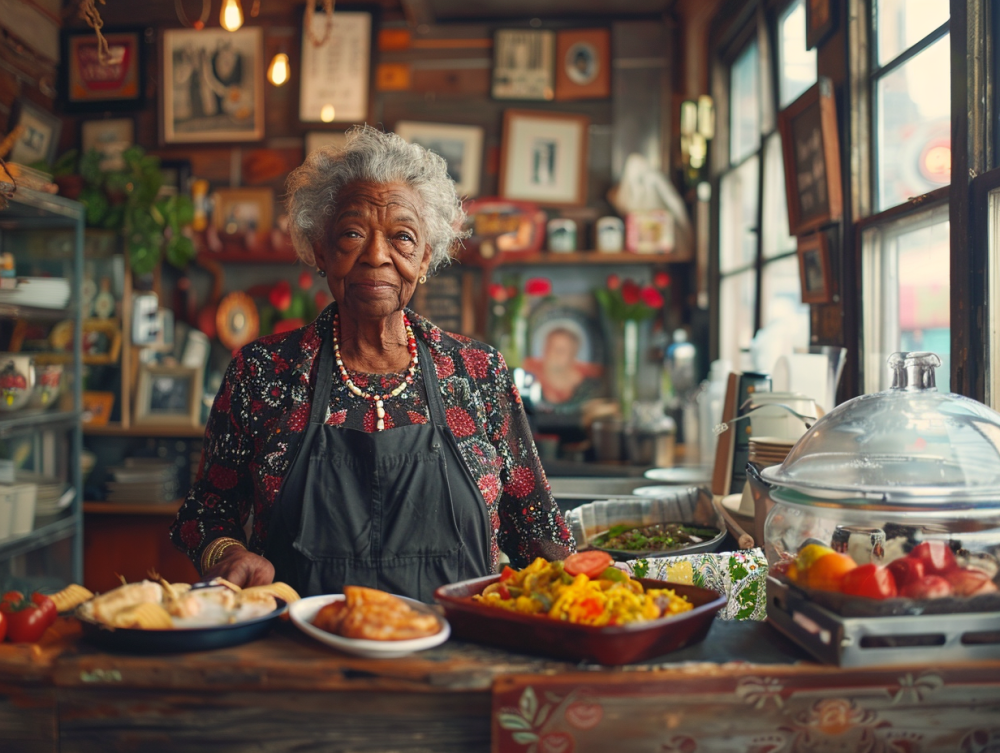The culinary traditions of the Black community tell a rich story that goes beyond mere sustenance; they encapsulate history, resilience and hope. As we approach the New Year, the meals prepared during this time are steeped in significance, connecting generations and honoring ancestral roots. This article explores the traditional foods that grace Black American tables during New Year celebrations, revealing their cultural importance and the stories they tell.
The significance of food in Black culture
Food is a powerful medium through which the Black community expresses its heritage. It reflects a history of survival and adaptation, particularly in the face of oppression. The meals prepared for New Year’s celebrations are not just about flavor; they symbolize good fortune, prosperity and a hopeful outlook for the year ahead. From black-eyed peas to cornbread, each dish carries a story that connects the past with the present.
Black-eyed peas: A symbol of good fortune
Black-eyed peas are a staple in New Year’s meals, believed to bring luck and prosperity. Native to North Africa, these legumes were introduced to Black Americans during the transatlantic slave trade, where they were often fed to enslaved individuals as a source of sustenance. Over time, black-eyed peas evolved into a symbol of good fortune, particularly when consumed on New Year’s Day. According to All Recipes, families consume these beans to usher in a year filled with health and abundance.
Hoppin’ John: A Gullah tradition
Another beloved dish is Hoppin’ John, a one-pot meal made with rice and peas, traditionally prepared by the Gullah Geechee people of South Carolina. This dish, which often includes pork for added flavor, is said to symbolize good luck for the New Year. The origins of Hoppin’ John can be traced back to West African culinary traditions, making it a delicious representation of cultural heritage. The New York Times highlights how this dish has been a part of the New Year’s celebration since the signing of the Emancipation Proclamation.
Greens: A leafy symbol of prosperity
Greens, such as collard or mustard greens, are another essential component of New Year’s meals. Their resemblance to dollar bills has led to the belief that eating greens will ensure financial prosperity in the coming year. Food scholar Adrian Miller notes that this tradition has been passed down through generations, emphasizing the importance of greens in Black culinary practices. Cooking a pot of greens is seen as a way to attract wealth and abundance.
Pork: A tradition rooted in history
Pork also plays a significant role in New Year’s meals. Historically, enslaved individuals were often given the less desirable cuts of meat, such as ham hocks and pig feet. However, these ingredients have transformed into symbols of good fortune. The belief that pigs “push things forward” into the New Year has solidified their place in celebratory meals. As noted by Black Southern Belle, replacing traditional poultry with pork is a way to ensure that good luck remains grounded.
Cornbread: A golden tradition
Cornbread, often served alongside these dishes, is another symbol of prosperity. Originally a simple mixture of cornmeal and water, cornbread has evolved into a beloved side dish enriched with milk and butter. The golden crust of cornbread is said to represent wealth and success, making it a fitting addition to New Year’s celebrations.
A culinary legacy of hope
The foods prepared for New Year’s celebrations in the Black community are more than just meals; they are a testament to resilience, cultural heritage and hope for the future. Each dish tells a story of survival, adaptation and the enduring spirit of a community that has faced adversity yet continues to thrive. As families gather around the table to share these traditional foods, they not only honor their ancestors but also celebrate the promise of a prosperous New Year.
In this way, the culinary practices of the Black community serve as a powerful reminder of the strength found in tradition and the hope that sustains us as we move forward into the future.
















